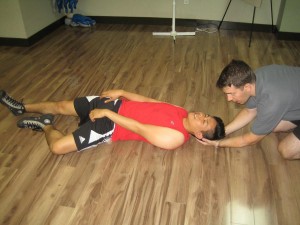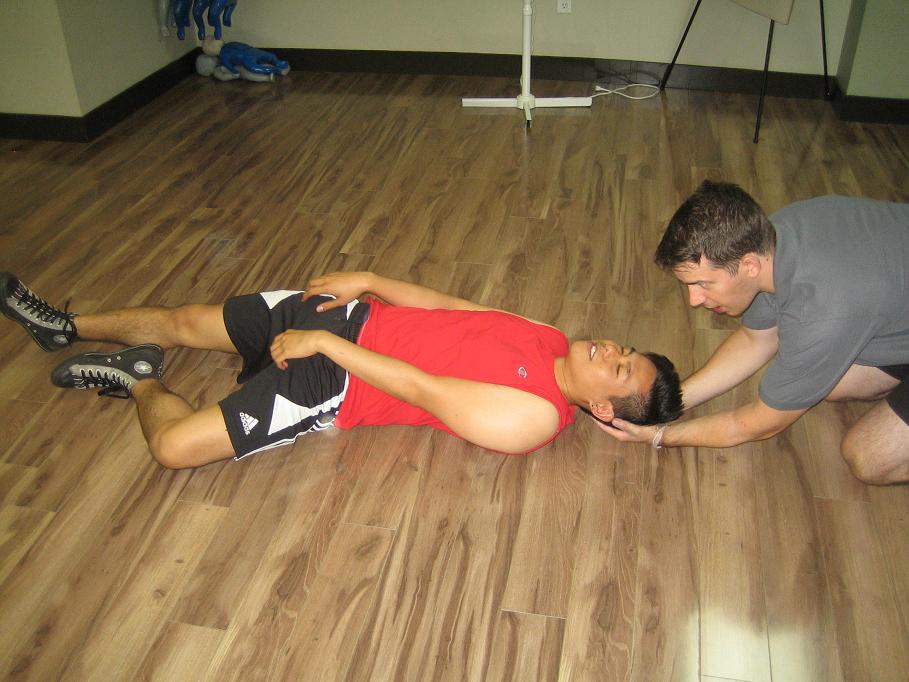A broken neck occurs when there is an injury in the cervical area of the spine. A neck injury is usually related to contact sports such as football, but it may also be caused by a forcible blow to the neck and other physical violence. This is considered a medical emergency because of its potential debilitating and life-threatening consequences.
The information posted on this page for head, neck and spinal injuries is for learning purposes only. To learn to manage broken bones, spinals, neck and head injuries register for a first aid course today.
What are the consequences of a neck injury?

The neck is a sensitive area in the body because there are nerves passing through the cervical spine that are responsible for the motor and sensory function of the upper extremities as well as the vital organs in the body. Any injury to the neck can cause a significant emergency that can lead to death, especially when it involves a damage to the cervical nerves that are responsible for controlling our breathing. Spinal shock may also occur if the spinal cord is severely cut or transected. The individual may suffer a sudden decrease in blood pressure because any severe injury or cut on the cord may cause sudden loss of nerve supply to the entire body (including heart and blood vessels).
Quadriplegia may also occur if there has been damage in the cervical spine. This is a condition wherein both the upper and the lower extremities are paralyzed owing to the loss of the nerve supply from the neck area down the body. A neck injury can make a person susceptible to paralysis when the injury involves the spine and the spinal nerves and an immediate first aid response is needed in case fatal injury occurs.
Immediate care for a neck injury:
The main goal of immediate care for neck injuries is to keep the person immobile until medical help arrives.
- After calling for help, hold the person’s neck and head in the position he was found. Never attempt to reposition the neck. Prevent it from twisting and bending.
- If the person is unresponsive, check breathing and airway. If necessary, begin CPR / basic life support.
- DO NOT tilt the head back when attempting to open the airway. Place your fingers on the jaw and lift the jaw forward.
- If you need to roll the person (if he is vomiting), keep his head, neck and back in line. Roll him as a unit.
Reference:
Hospital For Special Surgery. Neck Injuries Involving the Cervical Nerve Roots and Spinal Cord. Retrieved on June 23, 2014 from http://www.hss.edu/conditions_neck-cervical-nerve-spinal-cord.asp#.U6eR85SSxVA
Government of Western Australia Department of Health. First Aid for Spinal Injury. Retrieved on June 23, 2014 from http://www.healthywa.wa.gov.au/Healthy-WA/Articles/F_I/First-aid-for-spinal-injury

